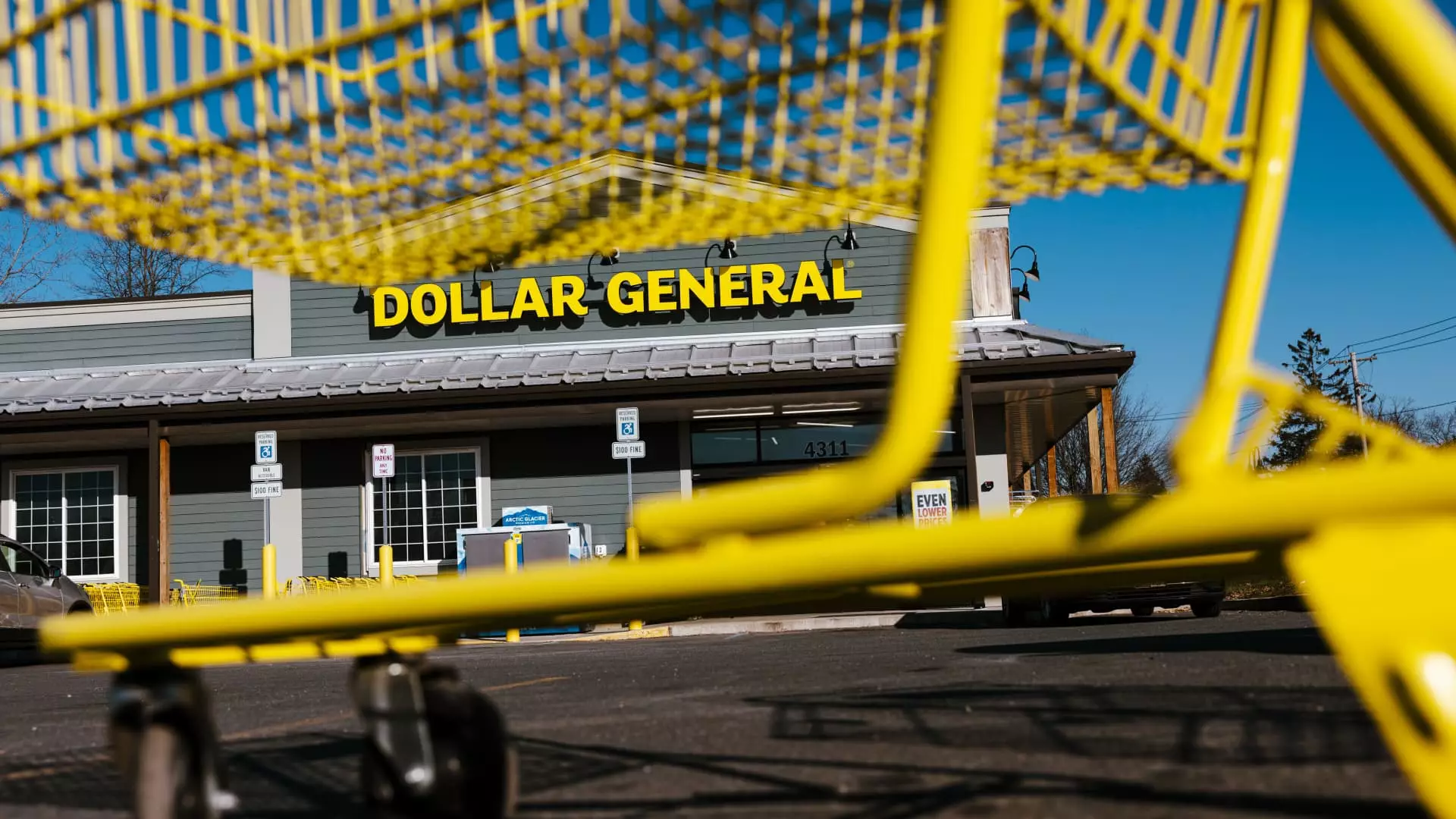Dollar General’s recent financial disclosures, wherein they announced fourth-quarter revenues that barely eclipsed Wall Street’s predictions, reveal more than just numbers on a page. Despite a reported revenue increase, the brand’s profitability took a massive hit, caused largely by store closures and a reevaluation of their business model. The chain’s CEO, Todd Vasos, issued a stark warning, emphasizing the financial strain faced by everyday consumers—one that should not be overlooked. These developments raise questions about the sustainability of dollar stores and the wider retail landscape in the current economic climate.
The Illusion of Growth
While Dollar General posted a slight uptick in revenue, it’s essential to dissect what that really means. The reported revenue of $10.3 billion for the quarter, representing an increase from the $9.86 billion in the same period last year, gives off the appearance of growth—yet this façade is blemished by a shocking net income drop. The company’s year-over-year net income plummeted from $402 million to a mere $191 million. Such a disparity is not merely a statistical anomaly; instead, it indicates a worrying trend that suggests the dollar store model may not be as resilient as previously thought.
Consumer Sentiment: A Dire Forecast
Vasos’s ominous projection that “consumers only have enough money for basic essentials” encapsulates a sobering reality in the retail sector. This isn’t just a passing comment—it encapsulates a fundamental shift in consumer behavior. As pride-swallowing economic pressures weigh heavily on households, brands that traditionally cater to low- and middle-income shoppers are appearing increasingly vulnerable. While dollar stores have historically thrived in times of financial downturn, the current macroeconomic climate—characterized by rampant inflation and diminished purchasing power—could be fundamentally altering that narrative.
Closed Doors and Lost Opportunities
In stark reality, Dollar General’s decision to shut down 96 stores alongside 45 Popshelf locations should send shockwaves through the retail industry. The reallocation of these assets signals an acute awareness that not all market segments can be efficiently served. Particularly unsettling is the closure of Popshelf locations, which were designed to appeal to more affluent shoppers seeking bargain options. If even these stores are deemed unsustainable amid a shaky economy, what does that say about the broader aspirations of dollar retail? Each shuttered location eliminates employment opportunities and diminishes community access to affordable goods, laying bare the harsh consequences of corporate strategy.
The Competition Factor
As lower-income consumers continue to feel the squeeze, Dollar General does not operate in a vacuum; larger competitors are gaining ground at an alarming rate. Retailers, notably Walmart, have made substantial investments in their e-commerce and delivery capabilities, increasingly capturing the very demographic Dollar General seeks to serve. The discount retail segment is becoming more competitive, and if Dollar General intends to remain a formidable player, they must invariably rethink their strategy, which is evidently clinging to outdated models.
Private Brands: A Roll of the Dice
The announcement of about 100 new private-brand products presents both an opportunity and a risk. While enhancing their offerings may entice budget-conscious consumers, the underlying question remains: will these offerings truly resonate with a shopper base that is increasingly prioritizing value over mere price? The expansion into new products relies heavily on not just consumer needs but their elastic spending power. If the consumer sentiment continues on a downward trend, new products may end up being little more than window dressing in an increasingly uncertain retail environment.
The Road Ahead
With expectations of same-store sales growth sitting between a modest 1.2% to 2.2% for the coming fiscal year, the outlook is less than encouraging. Analysts suggest a more aggressive sales growth projection of 4.1%, putting pressure on management to meet expectations that feel increasingly unattainable. Without transformative strategies, Dollar General may find itself stuck in an echo chamber of stagnation. The long-term viability of the dollar-store format in an evolving economic landscape raises legitimate concerns, underscoring the need for retailers to adapt or risk being left behind. In a world where consumers are increasingly discerning, simply operating in the discount retailing space may no longer suffice.


Leave a Reply